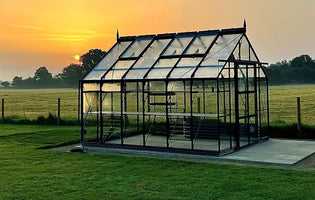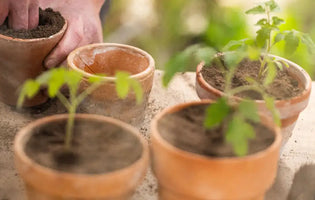Request a Brochure

The beautiful tones of yellow, brown and red means its time to get out the winter jumpers! Same goes for some garden plants so it’s always a good idea to have some horticultural fleece to hand in preparation of the cooler months ahead.
As we enjoy the flurry of leaves falling to the ground don’t be too quick to rake them all away. Piling leaves up, along with small piles of twigs and pruned woody stems not only create Autumnal interest in the garden but also provide shelter and warmth to many insects like centipedes and woodlice. If you rake them into a pile it could become home to hibernating mammals and ground feeding birds as well.
If you haven’t already, make sure your greenhouse is clean and plenty of light allowed in. It will be time to clear some space to bring in your tender perennials to protect them from frosts.
Give your borders a good tidy up by removing any fallen, dead and diseased materials. Cut back perennials that have flowered (remember to leave some for Winter interest) and then mulch the soil with well rotted manure or leaf mould which will help to keep plant roots in good condition over the Winter months. It’s good to be prepared!

For over wintering onions, shallots and garlic, its time to get those onions sets in. Mark out a line with string and gently pop them in the ground so the tips are showing . If you have heavy soils, it may be best to wait until Spring. To keep the risk of diseases low, make sure you pick heat treated sets and varieties such as Onion ‘Electric’ which is a lovely shiny red and very tasty variety.
Including a rockery in your garden, even if it’s really small, provides a great habitat for some insects. Clear a space, ensure excellent drainage and build up using rocks and/or large pebbles. You could even create your own rock pool at the top to encourage even more life to you space. Top it all off with some Saxifraga burseriana and mini varieties of Spring bulbs for colour early in the year.
It will soon be time to tackle climbing roses with your secateurs. If you leave climbers, they tend to get a little messy. The difference between a ‘climbing’ rose and a ‘rambling’ rose are the flowering times, which is something to remember. A climber will repeat flower but a rambling rose tends to flower once in early summer.
Birds will need to fatten up for the Winter months ahead, so providing supplementary food such as seed, suet and fat balls (don’t forget to remove them from the net bags) will give birds an extra boost. You can also make your own bird food by crushing cereals, porridge oats, mild cheese, cooked potatoes and cooked rice.










